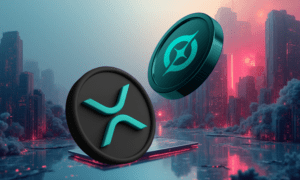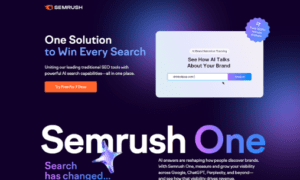In an era where technology evolves at breakneck speed and user expectations grow more sophisticated by the day, tech leaders face an undeniable challenge: creating and maintaining high-performing, scalable, and relevant digital products. To address this, product engineering has emerged as a strategic pillar—one that empowers organizations to translate visionary ideas into robust and market-ready applications. This article delves deep into how modern product engineering capabilities are transforming businesses, especially in the eyes of technology leaders navigating complex digital ecosystems.
The Strategic Role of Product Engineering in the Modern Enterprise
At its core, product engineering services blends innovation, design thinking, and agile development practices to accelerate product delivery and reduce time to market. However, its strategic value extends far beyond software development. Today, it plays a critical role in fostering digital resilience, improving customer experience, and enabling continuous improvement through data-driven insights.
For tech leaders, product engineering represents an opportunity to break silos between departments, integrate user feedback loops directly into the development lifecycle, and ultimately, deliver products that align with both market demand and long-term business goals.
Evolution of Product Engineering: From Code to Ecosystem
Traditional software development focused on building isolated systems and applications with specific functionalities. In contrast, product engineering represents a more holistic approach. It begins with understanding customer problems and ends with delivering solutions that are adaptable, secure, and scalable across multiple platforms.
This shift is particularly evident in how product engineering teams now operate:
- Cross-functional collaboration: Design, engineering, QA, and DevOps teams work in tandem, ensuring faster iterations and cohesive product delivery.
- End-to-end ownership: From ideation and prototyping to deployment and post-launch support, product teams are expected to own every phase of the product lifecycle.
- Tech-driven decision-making: AI, analytics, and real-time monitoring inform every development sprint, allowing teams to pivot quickly in response to user behavior.
For a tech executive, embracing this evolution is no longer optional—it’s essential for long-term innovation and competitiveness.
Key Capabilities Tech Leaders Expect from Modern Engineering Teams
To meet the demands of today’s business landscape, engineering teams must develop capabilities that go beyond writing code. Here are some of the most critical capabilities technology leaders look for when evaluating the strength of their engineering function:
- Rapid Prototyping and MVP Development
In the fast-paced world of digital innovation, speed often determines success. Tech leaders increasingly rely on teams that can quickly translate ideas into working prototypes or MVPs. This allows for early testing, validation, and refinement before committing to full-scale development.
- Cloud-Native Architecture and Scalability
Products must be built to scale effortlessly across geographies and user bases. Cloud-native architectures, containerization, and microservices are key enablers of this capability. Leaders want their teams to architect solutions that are not just scalable but also resilient and easy to maintain.
- Security and Compliance by Design
As data privacy regulations tighten worldwide, security must be integrated into every layer of product design and development. Modern engineering teams are expected to embed compliance, encryption, access control, and vulnerability testing into their CI/CD pipelines from day one.
- User-Centric Design and Experience Engineering
Engineering is no longer just about functionality—it’s about the experience. Companies investing in software product engineering services must prioritize usability, accessibility, and seamless interactions. Design-led development, where engineering and UX are closely intertwined, helps drive product adoption and retention.
- AI and Data-Driven Product Features
Tech-savvy users now expect personalization, automation, and predictive intelligence as part of the product experience. Leaders expect their teams to incorporate AI/ML capabilities into products—be it for smarter search, real-time recommendations, or predictive analytics. Having robust data engineering capabilities is crucial to this transformation.
Why Leading Enterprises Partner with Product Engineering Services Companies
Even the most capable internal teams can face bandwidth issues or skill gaps when tackling complex product challenges. That’s where a specialized product engineering services company can make a transformative difference. These partners offer:
- Domain-specific expertise: Whether it’s healthcare, fintech, logistics, or retail, engineering services firms bring industry insights to tailor solutions effectively.
- Scalable delivery models: With global delivery centers and agile methodologies, they can ramp up or scale down development teams quickly, based on project needs.
- Access to niche talent: From DevOps specialists to AI engineers, a seasoned services partner can bring niche capabilities that may be hard to find or hire in-house.
Additionally, by leveraging the experience and frameworks of an established partner, enterprises can avoid common pitfalls and accelerate their go-to-market strategy.
Integrating Product Engineering into Long-Term Roadmaps
Many forward-thinking organizations no longer treat engineering services as an external cost center. Instead, they see them as long-term collaborators capable of influencing product strategy. To ensure synergy between internal stakeholders and external partners, companies are:
- Creating hybrid teams that blend in-house product owners with offshore or onshore developers for seamless collaboration.
- Sharing roadmaps and user personas so partners understand business context and customer expectations.
- Implementing joint KPIs and performance metrics that align everyone toward shared outcomes.
This integrated approach helps avoid fragmentation and ensures that outsourced product engineering aligns with core business goals.
Tech Leader Perspective: Engineering as a Competitive Advantage
From CTOs of Fortune 500 companies to product heads at emerging startups, the view is increasingly clear: product engineering is not just a technical function—it’s a business enabler. The ability to continuously build, scale, and evolve digital products defines whether an organization thrives or fades in today’s dynamic market.
Engineering leaders who recognize this shift are reorganizing their teams around agility, outcome-based delivery, and customer obsession. They’re investing in continuous learning, DevSecOps practices, and AI-powered automation—not just to reduce costs, but to drive differentiation and user value.
Case in Point: Engineering-Driven Transformation Stories
Across industries, we’re seeing examples of how product engineering capabilities have helped companies break new ground:
- A healthcare technology company partnered with a digital product engineering services provider to build a cloud-based telehealth platform that scaled to 10 million users during the pandemic—delivering real-time video consultations, patient records access, and integrated pharmacy ordering.
- A logistics startup used AI-enabled product engineering to optimize route planning and fleet utilization, reducing operational costs by 23% while enhancing delivery speed and customer satisfaction.
- A fintech firm leveraged product engineering to modernize its legacy core banking platform, enabling seamless digital onboarding, biometric security, and real-time fraud detection.
Each of these success stories was made possible by not just writing better code—but by reimagining how engineering could solve deeper business challenges.
The Road Ahead: Engineering for the Next Decade
As technologies like quantum computing, spatial computing, and generative AI become mainstream, the scope and complexity of digital products will only grow. This will demand a new level of engineering maturity—one where systems are not just built for function, but also for ethical use, adaptability, and continuous learning.
Product engineering teams will need to evolve into dynamic learning systems themselves—constantly absorbing market shifts, customer insights, and technological advances to stay relevant. Tech leaders who empower such teams, invest in the right partnerships, and integrate engineering into strategic planning will be better positioned to innovate and lead in the years to come.
Final Thoughts
Engineering is no longer behind the curtain—it’s center stage. For today’s tech leaders, success hinges not just on building software, but on engineering experiences that are meaningful, intelligent, and scalable.
In this new age of technology-led disruption, those who invest in future-ready software product engineering are not just building products—they’re building competitive advantage.



































